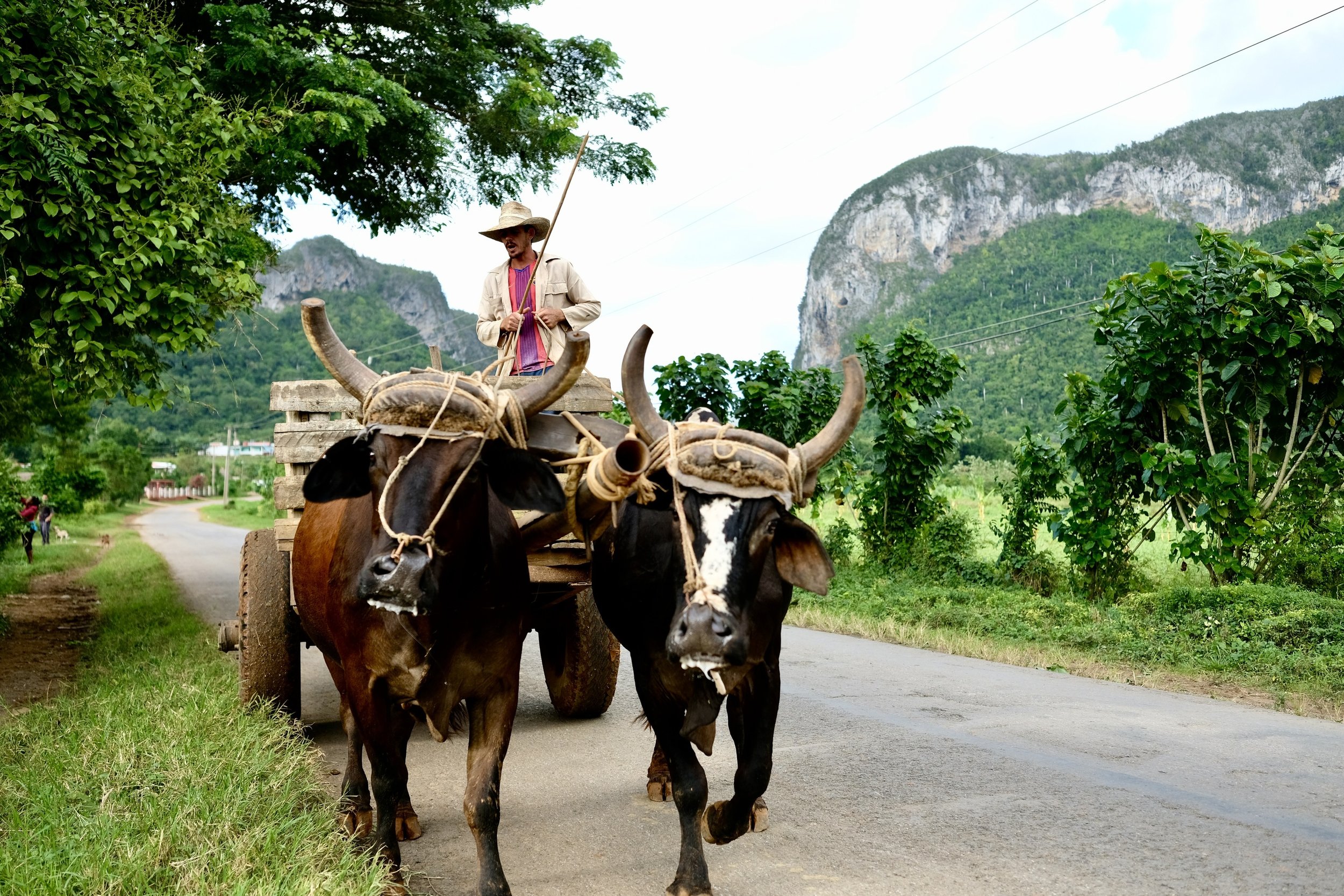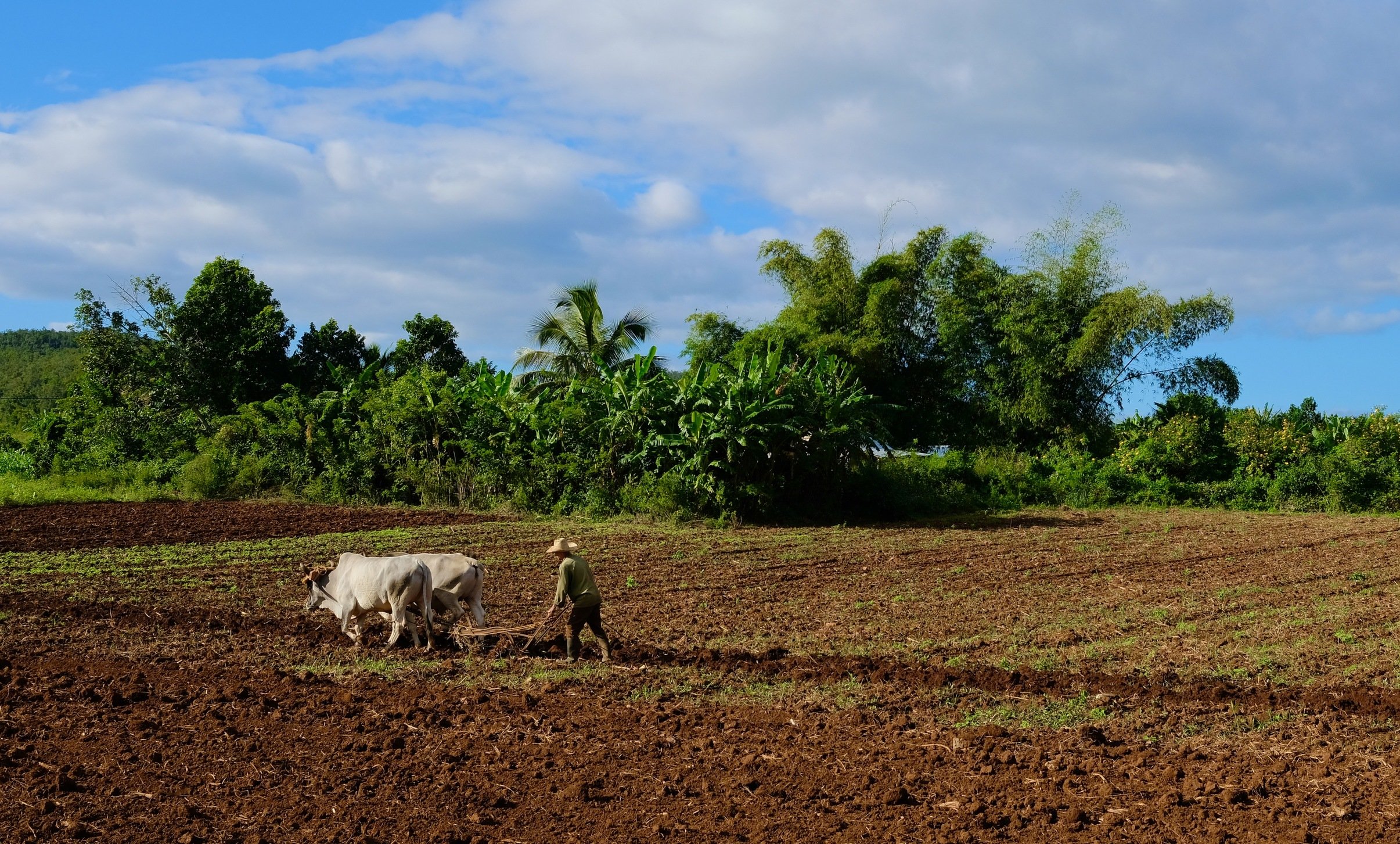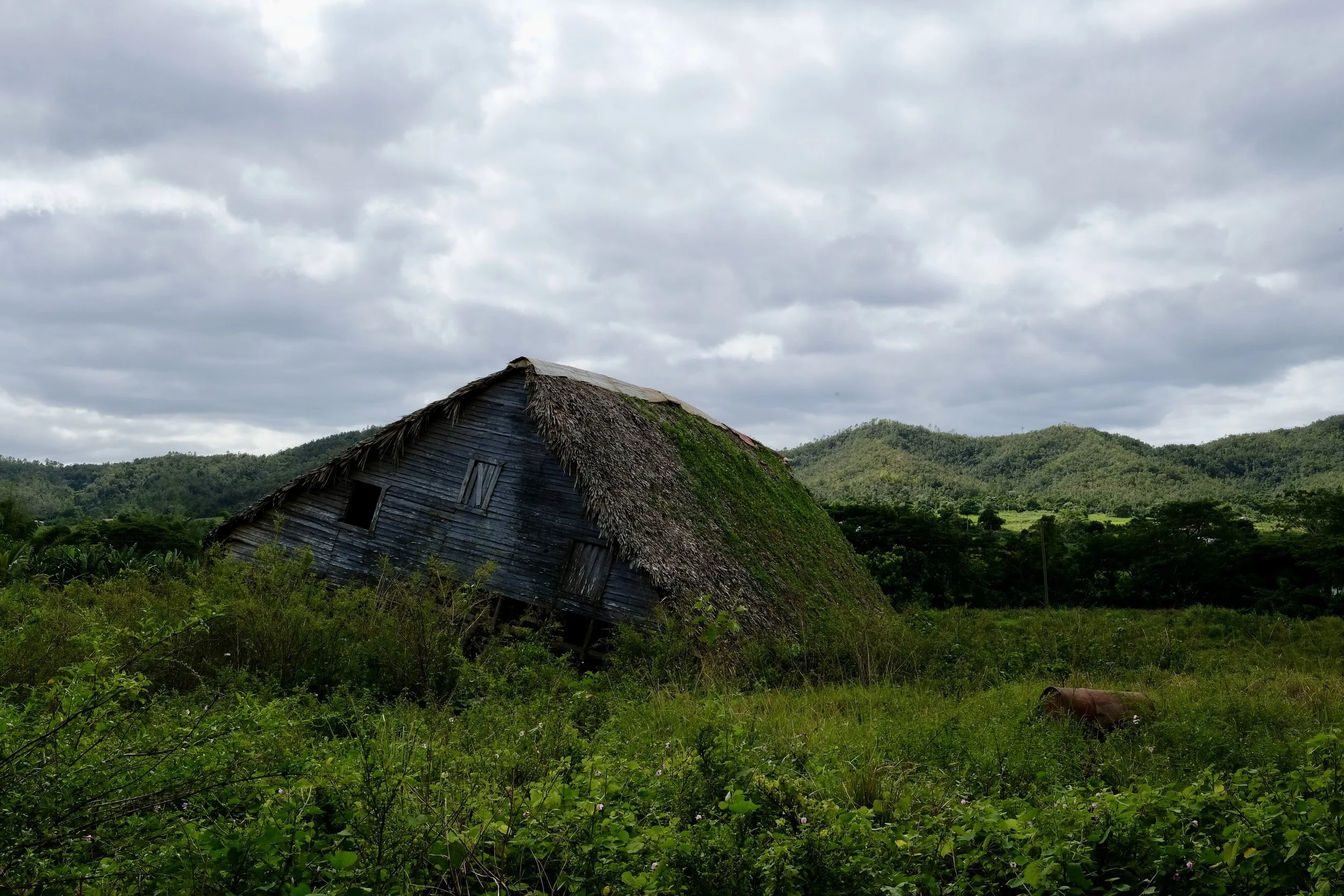The Valley of Viñales by Patricia Kerkhofs
In the heart of western Cuba lies the valley of Viñales, a place where the air smells of earth and tobacco and where time moves gently. The landscape unfolds in deep red soil, emerald-green fields and the soft blue of distant limestone hills. It feels timeless, almost sacred, a living postcard of Cuba’s rural soul.
Every morning, when the mist lifts from the valley, men in wide-brimmed straw hats walk to their fields with their oxen. The animals move slowly, their heavy yokes creaking as they pull old wooden ploughs through the red earth. Their rhythm is steady and patient, like the heartbeat of the land itself. Working side by side with the animals, the farmers guide each furrow carefully, turning the soil that will soon cradle the seeds. There are no machines, no roar or engines, only the sound of hooves, the whisper of the plough, and the quiet strength of human hands that have done this work for generations.
The farmers of Viñales, the guajiros, live closely tied to the soil that sustains them. They sow and harvest by hand, growing tobacco, rice, beans and sugarcane. When the sun climbs high and the heat turns heavy, they rest for a moment under a tree or in a small wooden hut, where they can lie down for a short break. Then they return to the work that keeps their traditions alive. Their faces are lined by the sun, their hands hardened by years of labour, yet there is a calm dignity in every movement. Small wooden huts surround the fields, simple homes with rocking chairs on their porches, where life unfolds at a slower pace.
In the evenings, after the day’s work is done, the farmers gather with neighbours, sharing strong Cuban coffee or a little homemade rum. Their stories drift through the warm night: stories of harvests, storms, and the enduring beauty of the valley they call home.
One afternoon, as I walked through a small village surrounded by fields, I met a woman who instantly caught my attention. She sat in her rocking chair beside my dear friend Mirjam Aadli; they were laughing together, their joy carried on the warm breeze, and I couldn’t help but join them. On every journey, there is someone who leaves a lasting impression…..
Her clothes were worn and stained, her hands rough, her face covered in dust and soil from a long day’s work in her fields. Yet there was something deeply graceful about her presence.
We couldn’t speak the same language, but we understood each other through simple gestures, smiles and nods. She lived in a small pink house with her granddaughter, who peeked shyly from behind the doorway, curious but smiling. In that brief moment, I felt something profound, the universal language of human connection, born not from words but from respect and shared humanity.
The red soil of Viñales leaves its mark on everything: on boots, on tools, on the walls of houses and on the people themselves. It’s not just the land they work, it’s the land they belong to. In every heartbeat of the valley, in every hand, you can feel a deep connection between man, animal, and nature.
In a world that moves ever faster, Viñales reminds us of another rhythm; slower, quieter, more human. It’s a place where life is measured not in hours but in seasons. And as the sun sets behind the mogotes, painting the valley in gold and rust, it’s easy to understand why this land and the people who tend it hold such quiet, enduring beauty.
Some places stay with you long after you’ve left. Viñales is one of them, not for what you see, but for what you feel: the red dust, the light, and the quiet dignity of its people.




























































